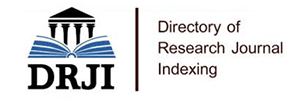
Journal Basic Info
- Impact Factor: 1.995**
- H-Index: 8
- ISSN: 2474-1647
- DOI: 10.25107/2474-1647
Major Scope
- Neurological Surgery
- Robotic Surgery
- Bariatric Surgery
- Minimally Invasive Surgery
- Gynecological Surgery
- Surgical Oncology
- Breast Surgery
- Pediatric Surgery
Abstract
Citation: Clin Surg. 2019;4(1):2532.Case Report | Open Access
Acute Achalasia Following Magnetic Sphincter Augmentation for Gastroesophageal Reflux Disease: A Case Report
Joslin N Cheverie, Erin Ward, Arielle M Lee*, Rachel R Blitzer, Ryan Broderick, Bryan J Sandler, Garth R Jacobsen and Santiago Horgan
Division of Minimally Invasive Surgery, Center for the Future of Surgery, University of California San Diego, USA
*Correspondance to: Arielle M Lee
PDF Full Text DOI: 10.25107/2474-1647.2532
Abstract
Background: Magnetic Sphincter Augmentation (MSA) is an effective surgical option for treatment of refractory gastroesophageal reflux. Post-operative dysphagia, pain, nausea, and device erosion are reported, requiring device explantation. A recently reported erosion rate is 0.3% requiring explantation. Dysphagia is a common indication for removal at a rate of 1.6% while previous case reports describe rare instances of acute achalasia secondary to Nissen fundoplication; there are no reports of this phenomenon with MSA. We describe a case of acute achalasia post MSA placement with complete resolution following surgical extraction. Case Report: A 72-year-old female with chronic gastroesophageal reflux underwent laparoscopic MSA. Her pre-operative evaluation was normal with respect to upper endoscopy, manometry, and esophagram. She developed acute dysphagia and oral intolerance within 10 days of MSA. Barium swallows showed food particles and retained barium with no evidence of magnetic bead ring distention at the GE junction, indicating malfunctioning of the device. Prompt evaluation by endoscopy showed stricture at the gastroesophageal junction. Despite two endoscopies with balloon and Maloney dilatations, she had persistent severe oral intolerance. High-resolution manometry demonstrated an absence of esophageal motility with 75% LES relaxation. Removal of the device led to complete symptom resolution. Follow-up manometry 2 weeks post-removal showed normal esophageal motility and LES function, while barium swallow demonstrated scant reflux. Conclusion: This is the first case of acute achalasia secondary to MSA device implantation. Compete resolution occurred after device explant with clinical and manometric resolution. MSA remains an effective, safe surgical intervention for gastroesophageal reflux with rare complications requiring reoperation for device removal.
Keywords
Foregut; GERD; Achalasia; Magnetic sphincter augmentation; Laparoscopic
Cite the article
Cheverie JN, Ward E, Lee AM, Blitzer RR, Broderick R, Sandler BJ, et al. Acute Achalasia Following Magnetic Sphincter Augmentation for Gastroesophageal Reflux Disease: A Case Report. Clin Surg. 2019; 4: 2532..













